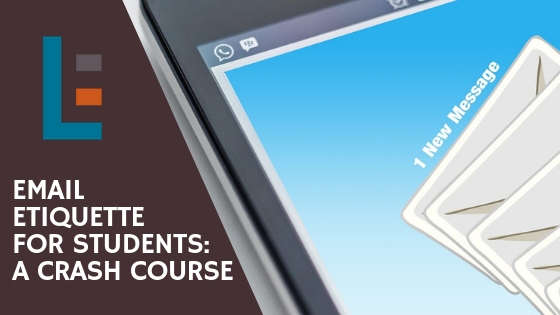Email Etiquette for Students: A Crash Course

If I had a pencil for every time I received a well-intended, but slightly rude, terse, or thoughtless email from a student, I could give Staples a run for its money. However, the positive thing about receiving one of these poorly organized emails is that it shows student initiative. Even a terribly composed email means that a student had the forethought to reach out for help and clarification. Another upside to the careless email conundrum is that it can be easily mended with a few helpful pointers and some practice.
Whether students are in elementary school, middle school, high school, or the post-secondary level of their education, email etiquette is a crucial skill for communicating with educators and advocating for themselves as learners. Starting young learners early with digital literacy skills and expectations allows them to build that critical foundation for blending communication and technology.
Here are some tips to share with your students:
- Always begin with a cordial greeting or salutation that suits your recipient. If students are emailing a friend or classmate about tonight’s homework, a casual greeting and the peer’s first name is fine. However, if emailing a teacher or principal, students should consider a more formal greeting and address the recipient as Dr., Mr., or Mrs. Students should know that jumping straight into a question or request without a standard greeting creates a demanding or somewhat rude tone, whether intentional or not.
- After the greeting, cut to the chase. Explain why you are emailing—what is the intention or purpose of this email? What information or response are you seeking? Keep it direct and concise, as to remove superfluous details or long-winded paragraphs.
- Take ownership of the question. For instance, if students are emailing about the homework assignment because they forgot to write it down, they should make mention of their error or oversight briefly in the email. This helps to show the teacher that, while the student may have neglected to write the assignment down, she is taking ownership of that mistake and taking initiative to remedy the situation.
- Be specific about the class that you are referring to in your email. Teachers often teach many courses, grade levels, or even subject areas. So if you are asking about the notes, handouts, or announcements that you may have missed, be sure to clarify which course or class period you are asking about. Especially for middle and high school students, pacing can vary from period to period, so it is especially helpful to remind the teacher of which specific period and date you are seeking information or materials for.
- Finish with a cordial closing to thank your recipient in advance. Be sure to digitally “sign” your email by including your full name. This is crucial. Oftentimes, students neglect to include their name at the end of an email. Too often when this happens, I am left wondering which of my 150 students could be soccerlover18@gmail.com, for instance. This makes it very difficult to provide a helpful response when teachers do not know who sent the original email.



